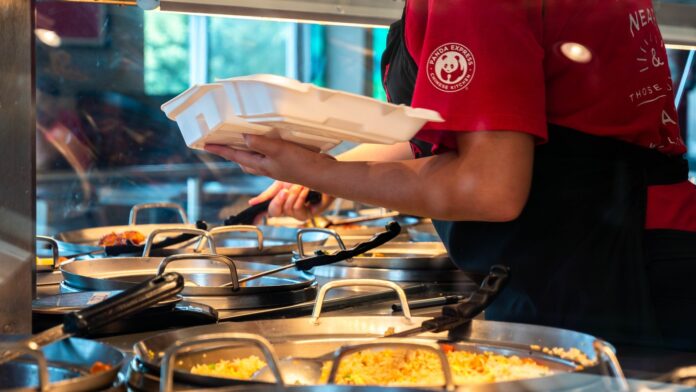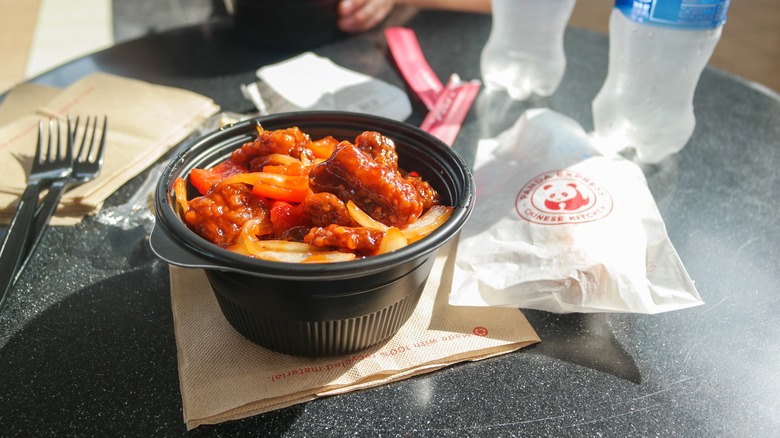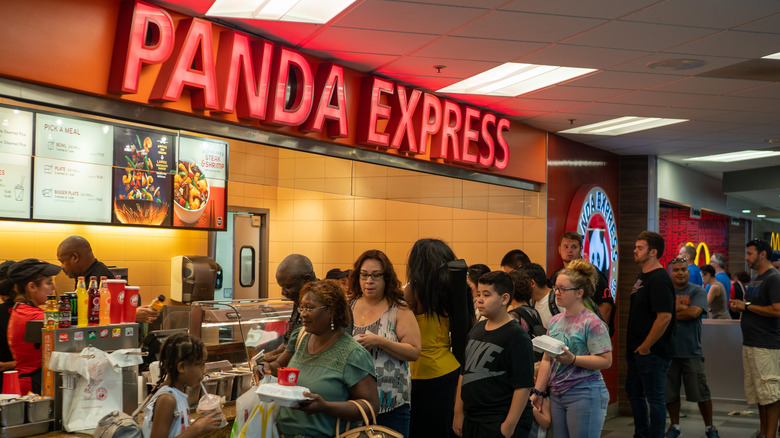No matter how many smiling faces and arm-in-arm employees or employers we see in commercials or promotional videos, we tend to think of fast food chains as run by faceless holding companies or international corporations. But most had humble origins with individual owners. Ray Kroc bought a small chain from the MacDonald brothers, while brothers Dan and Frank Carney launched Pizza Hut while they were in college. Amazingly, one fast food restaurant, ubiquitous in food courts and malls around the country, is still family run. And two of its founders, a husband and wife, along with their daughter, are still in charge. That exception to the conglomerate rule is Panda Express.
Even its name suggests corporate design. It sounds as if it was thought up by committee, as “Express” suggests an amped-up 21st century business model run through automation. In fact, the story of Panda Express couldn’t be more different, or more American. Launched over 40 years ago in Glendale, California, by Andrew and Peggy Cherng as a spin-off of their sit-down restaurants, the chain has grown to over 2,300 locations internationally. Panda Express is even responsible for the creation of some very popular dishes, versions of which now appear at corner Chinese take-out spots around the country. Thanks to fresh ingredients and a diverse menu, it’s also an excellent option to simplify at-home meal prep.
The history of Panda Express
In 1973, Andrew and Peggy Cherng, along with Andrew’s father, chef Ming-Tsai Cherng, opened a modest restaurant called Panda Inn in Pasadena, California. Hailing from Yangzhou, China, Ming-Tsai had worked in kitchens in Taipei and Yokohama in the ’50s and ’60s, and Andrew helped his father run Ting Ho in Los Angeles in 1972. The family opened four more Panda Inns, before opening the first Panda Express in the Glendale Galleria mall in 1983.
In the early 1980s, Asian-American food as a fast food concept was pretty scarce. The Cherngs incorporated computers and menu data analysis early on, and instituted wellness and business training programs for its staff almost from the beginning. Thanks to this deliberately customized and tech-forward concept, the restaurant quickly took off.
But it’s the food that draws people toward a Panda Express. The goal was not to recreate authentic Chinese dishes, but to make Chinese American food that appeals to a large audience. Andrew and Peggy’s daughter, Andrea Cherng is the company’s CMO and told Business Insider that the restaurant reflected a long tradition of Chinese chefs using traditional culinary experience and skills to create dishes that appeal to an American palate. This tradition has outlasted Ming-Tsai’s run of the kitchen. In 1987, chef Andy Kao (originally from Taiwan) created the store’s signature orange chicken, inspired by dishes from the Hunan province. It’s still very popular and widely mimicked — there’s even a Trader Joe’s version you can easily upgrade.
Why Panda Express works
Despite being still run by a Chinese immigrant family — there are no franchised stores beyond licensed university locations — and using a kitchen that continues to craft new dishes inspired by traditional techniques, the chain has often had to deal with debates about culinary authenticity. But there is no shortage of Asian-American food writers who defend the end result.
As Ian Joo wrote recently for The Michigan Daily, much of what is now considered early American Chinese cuisine (think chop suey or egg foo young) arose thanks to waves of Cantonese immigrants trying to make their way in late 19th and early 20th century America. They melded heritage-based dishes with locally available ingredients to please a culturally diverse customer base. That legacy is what Panda Express taps into in a successful way. Is it authentic Chinese? Not really. Is it authentic American Chinese? Heck yeah, according to its defenders, like Joo.
Thanks to the ongoing growth and success of the Cherngs’ restaurants, the family recently renovated and upgraded the original Panda Inn in Pasadena that started it all. The 51-year-old restaurant reopened this month with new, luxe interior designs, authentic dishes from Yangzhou-based chefs (where Andrew’s father Ming-Tsai grew up), and a wide variety of amenities, including a sushi bar, reflecting the family’s time in Japan. According to the restaurant’s website, the upscale revamp reflects the family’s long journey and “a son’s tribute to his father.” What could be more American than that?



